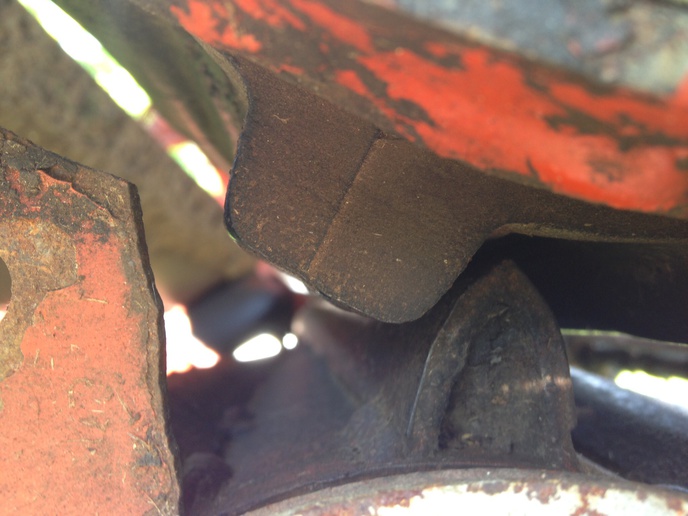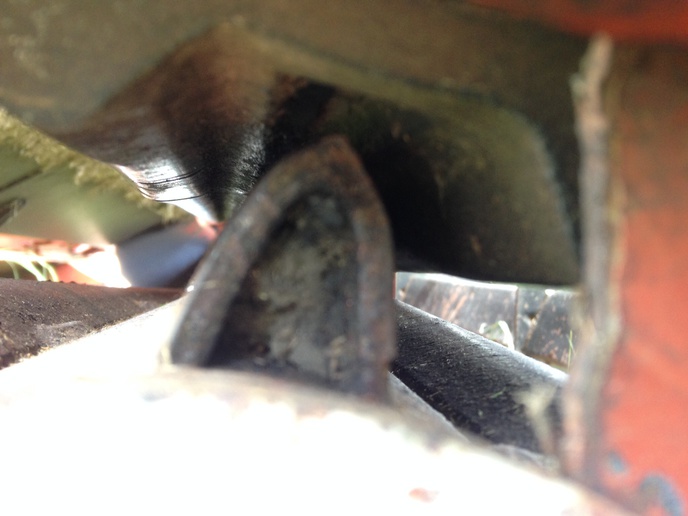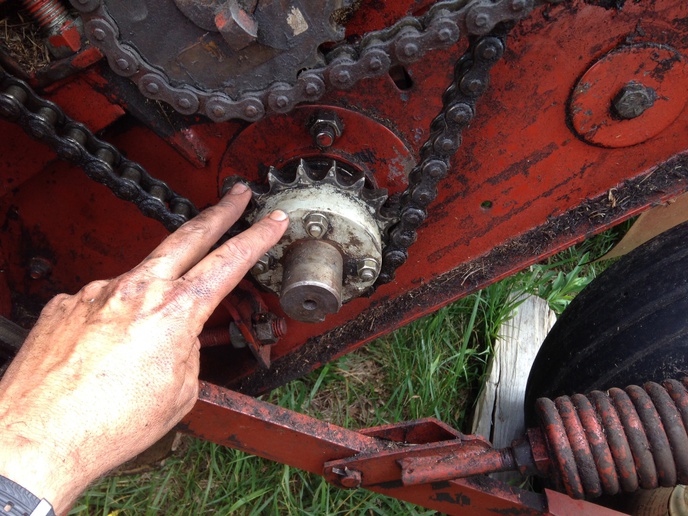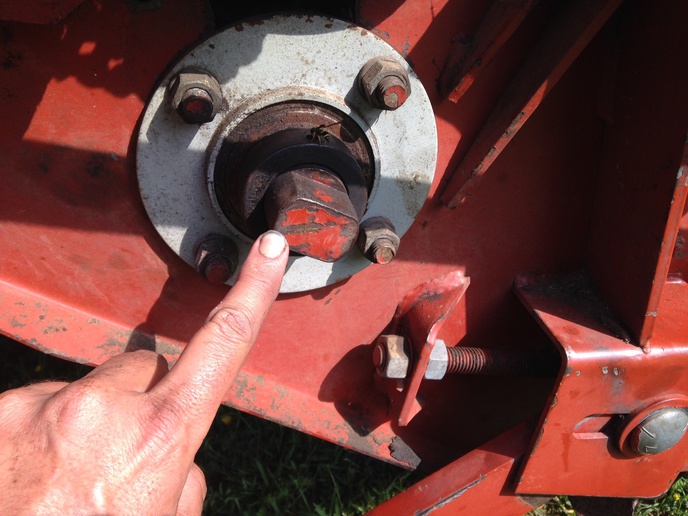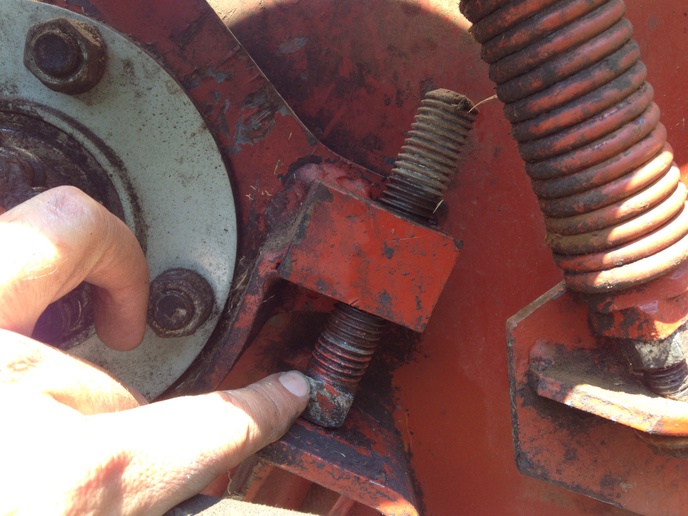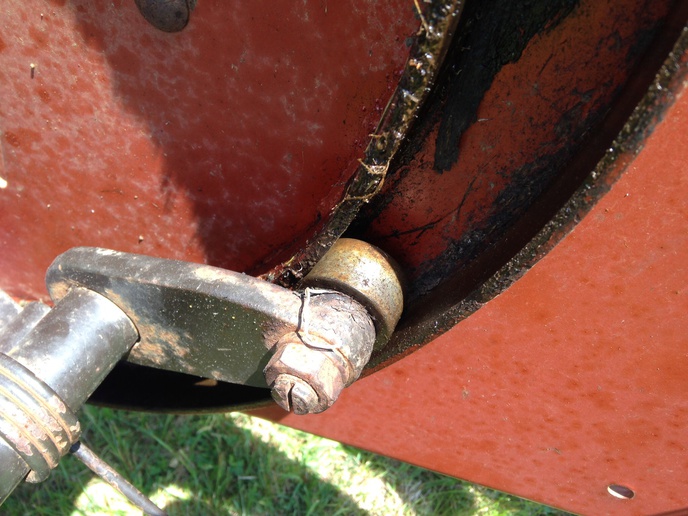We pulled out the Hesston 1110 haybine tonight for a look-see and a very brief trial run. Greased up everything, made no real adjustments and mowed some orchard grass mix in a spot about as big as a basket ball court times two.
The machine is fairly noisy. I'm not so sure the rollers are not cranked down and touching each other. There is also some slap in the sickle - which the manual goes into great detail in troubleshooting/adjusting.
Never ran a haybine before. This one is 7 ft cut and when put out of transport into cutting position, makes for a WIDE combo with the tractor. The spot I was mowing is more of a trimming job, but I had to be careful how I pulled the haybine. My sickle mower is definitely more nimble! Just about every haybine I've looked at - except mine, has the right most cover/shield banged up. I can see how that can happen. I'd like a 9ft haybine and that extra 2 ft will be nice in the field, but not so nice getting around our buildings. Also need to get use to the left side heal/cutting edge of the mower. On my sickle mower, it's right at the edge of the rear wheel, this moco sets the cutter bar out a little further.
The Hesston cut very cleanly. It is set on about a 2-1/2 or 3 inch cut, I'll reset it to max cutting height, which I believe is 5 inches. I'll also pick up a complete spare knife. The haybine has a compartment for a spare knife to be stored, but it was empty.....
The hay cut was definitely conditioned. Really interesting for everyone to see the stems crimped and leaves bruised. The Hesston rubber/steel roller combo did a very good job of crimping/conditioning the hay IMHO.
So we've got several weeks, maybe a month or more before we get into the timothy, but got a great start tonight vetting this Hesston 1110.
No pics - but once we get into the serious hay making, pics and videos to come.
Bill
The machine is fairly noisy. I'm not so sure the rollers are not cranked down and touching each other. There is also some slap in the sickle - which the manual goes into great detail in troubleshooting/adjusting.
Never ran a haybine before. This one is 7 ft cut and when put out of transport into cutting position, makes for a WIDE combo with the tractor. The spot I was mowing is more of a trimming job, but I had to be careful how I pulled the haybine. My sickle mower is definitely more nimble! Just about every haybine I've looked at - except mine, has the right most cover/shield banged up. I can see how that can happen. I'd like a 9ft haybine and that extra 2 ft will be nice in the field, but not so nice getting around our buildings. Also need to get use to the left side heal/cutting edge of the mower. On my sickle mower, it's right at the edge of the rear wheel, this moco sets the cutter bar out a little further.
The Hesston cut very cleanly. It is set on about a 2-1/2 or 3 inch cut, I'll reset it to max cutting height, which I believe is 5 inches. I'll also pick up a complete spare knife. The haybine has a compartment for a spare knife to be stored, but it was empty.....
The hay cut was definitely conditioned. Really interesting for everyone to see the stems crimped and leaves bruised. The Hesston rubber/steel roller combo did a very good job of crimping/conditioning the hay IMHO.
So we've got several weeks, maybe a month or more before we get into the timothy, but got a great start tonight vetting this Hesston 1110.
No pics - but once we get into the serious hay making, pics and videos to come.
Bill


